From Land to Table: The Culinary Riches of...
Cretan cuisine lives on from home...
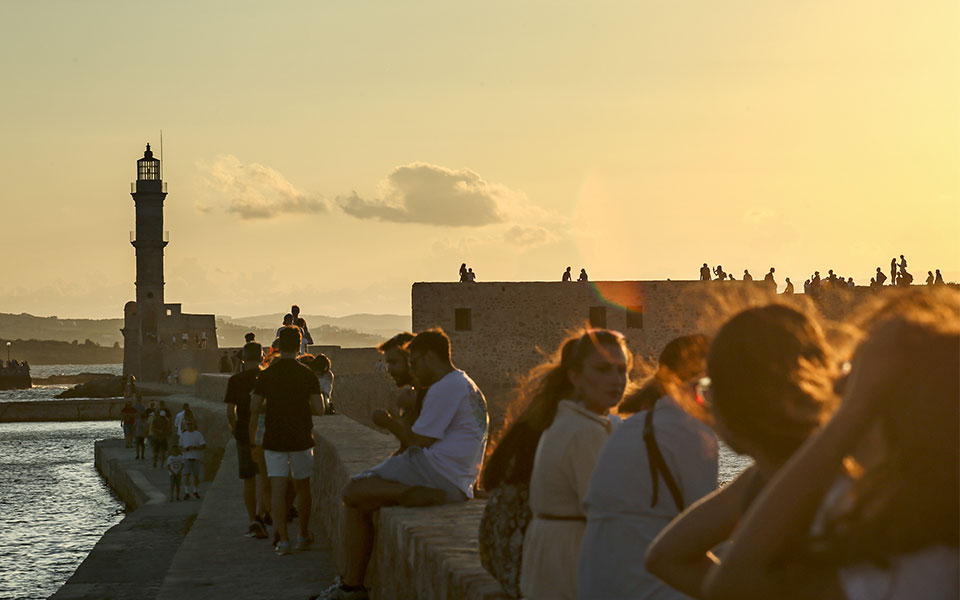
The Venetian port of Hania with its famous landmark, the Egyptian lighthouse.
© Intime News/Liakos Giannis
Roses, carnations, orchids and gladiolas adorn the Epitaphii of Trimartyri (the Cathedral of Hania), Aghios Nikolaos in Splantzia and Aghia Aekaterini, filling the city with fragrances on Good Friday, during the procession. At the same time, the Municipal Philharmonic Orchestra accompanies the Epitaphios (decorated funerary bier bearing the embroidered image of Christ) of a large neighborhood or municipal unit.
Various special events take place outside the city of Hania, such as the outdoor Descent from the Cross in the village of Voulgaro and the traditional bazaars in Voukolies and Vrysses, where you can buy Cretan products and enjoy Lenten delicacies. Trimartyri, the Monastery of Tzagaroli in Akrotiri and the Monastery of Gonia in Kolymbari are both famous for their Liturgies of Resurrection, however, every village around Ηania, from the smallest to the largest, is flooded with the Faithful at Eastertime, the atmosphere filled with devotional spirit.
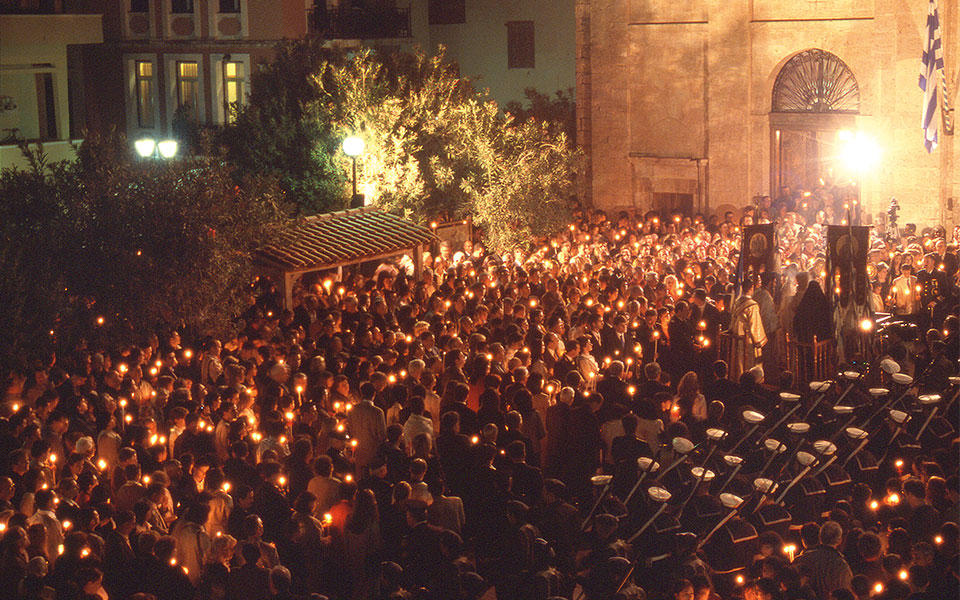
Large crowds gather on the evening of the Resurrection in the Cathedral of Hania.
© Visualhellas.gr
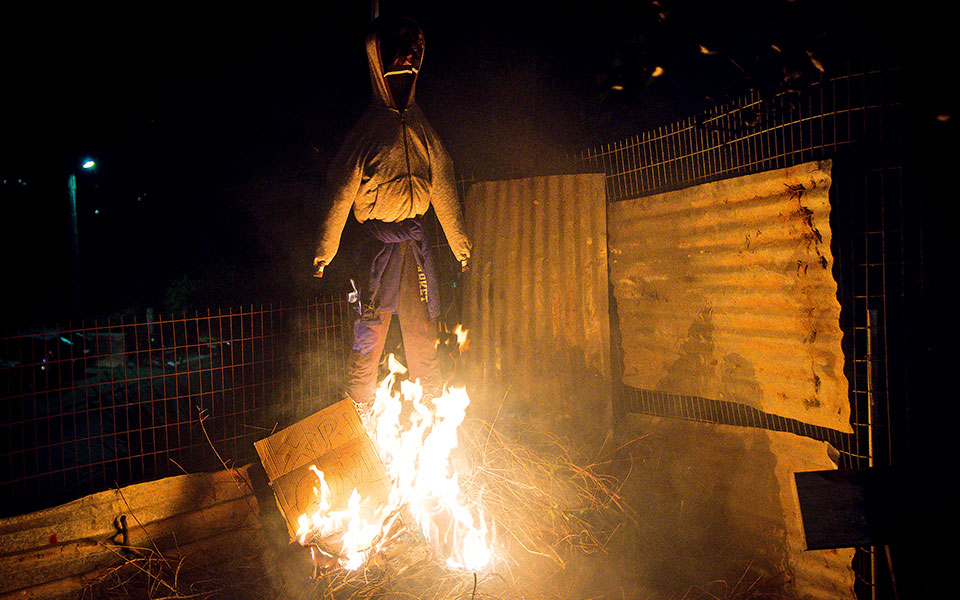
After the Resurrection, when the priest announces that Christ Has Risen (“Christos Anesti”), an effigy of Judas is burned on a pyre of wood and branches, known as "Fournara."
© Visualhellas.gr
After the Resurrection, when the priest announces that Christ Has Risen (“Christos Anesti”), an effigy of Judas is burned on a pyre of wood and branches, known as Fournara, to the sound of bells and fireworks.
Αs for traditional Easter gastronomy, on Holy Thursday, Cretan households prepare kaltsounia (with mizithra, anthotyro or tyromalama), tsoureki and Easter Breads adorned with red eggs. On Holy Saturday, the menu includes magiritsa (a traditional Greek Easter offal soup), gardoumpakia (lamb or goat intestines wrapped around seasoned offal) cooked in the oven or in a pot, and on Easter Sunday, lamb on a spit, antikristo (the meat is placed on big wooden skewers that are arranged around the fire and roasted), and Haniotiki (a local meat pie).
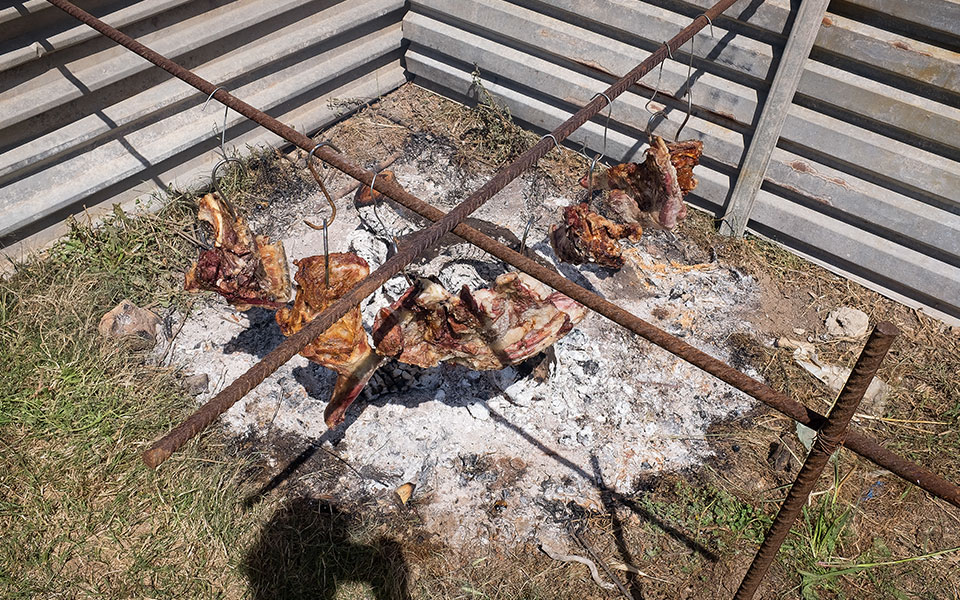
Easter "antikristo" (spit-roasted) lamb
© Visualhellas.gr
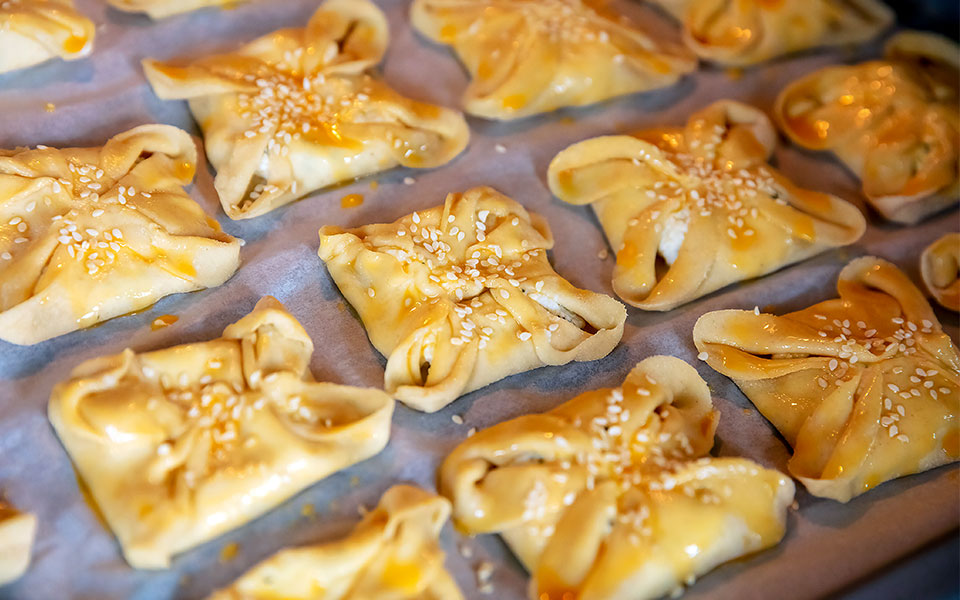
On Maundy Thursday, the people of Ηania make kaltsounia, tasty cheese and herb snacks.
© Shutterstock
Hania is an amalgam of the Mediterranean, Venice, the Near East, the Greek islands, the Renaissance and the Ottoman culture. It is a magical city, sophisticated yet rustic, with many worlds developing within each other, like concentric circles. The city is crowded, bustling and smells of roasted coffee and bougatsa (a kind of pastry, sweet or savory, consisting of semolina custard).
If you’re a first-timer, you can start with a walk around the Venetian harbor, among the enthusiastic tourists who flock to Crete in the spring and admire the Great Arsenal, the Yali Mosque (Kucuk Hasan Pasha Mosque) and the Egyptian lighthouse.
Turning onto Angelou Street, you are going to find yourself in the district of Topana, where the Christian population lived during the Turkish occupation. It is one of the nicest neighborhoods of Ηania that looks like a small labyrinth behind the port. Then, you should visit Ovriaki, the old Jewish quarter (on Kondylaki by-street you will also see the restored Etz Hayyim Synagogue).
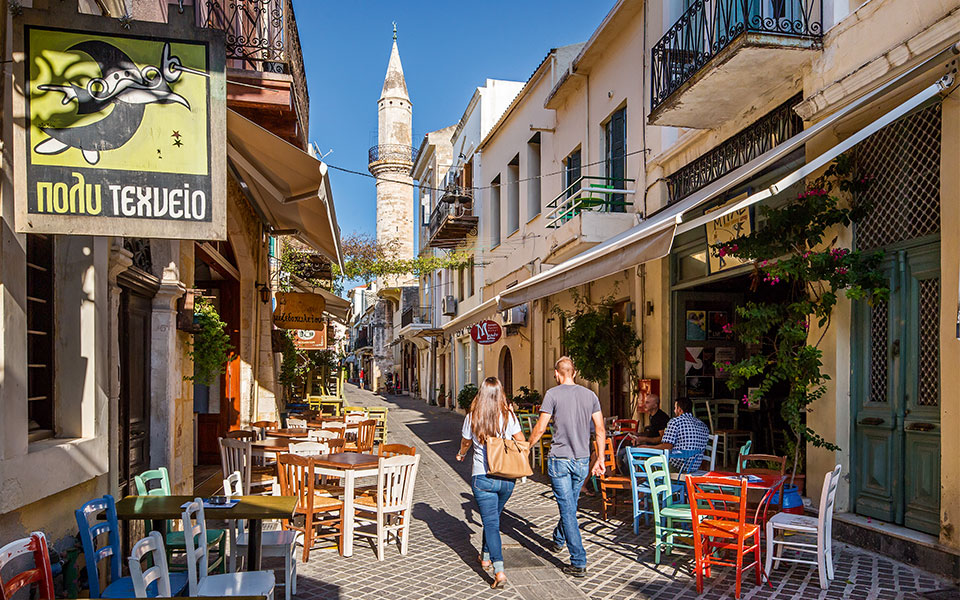
On Hatzimihali Daliani Street featuring the Ahmet Aga minaret, in Splantzia.
© VISUALHELLAS.GR
You can also explore Stivanadika, on Skrydlof Street, which, a century ago, was monopolized by leather workshops, famous for their stivania (traditional Cretan boots). Today the market’s profile has changed quite a bit and the area of Stivanadika hosts all kinds of tourist shops.
Next on your tour, you will come across Splantzia, the once rich Turkish neighborhood, which in recent years has been much loved by revelers and drinkers. Continuing your walk along the beach of Koum Kapi, in the direction of Halepa district, it is worth making a stop at the new Archaeological Museum of Hania. It was inaugurated a year ago following its relocation from the Catholicon of the Venetian Monastery of Aghios Fragiskos (St. Francis), where it had been housed since 1962. The historic and highly atmospheric Monastery of Aghios Fragiskos has given way to a modern building by Bobotis+Bobotis Architects, which the city admittedly needed. If you feel like walking a little more, you can head to the tombs of Eleftherios Venizelos (Greek statesman and former prime minister) and his son Sophocles, at Akrotiri, which are located at a spot with a panoramic view.
This season is also ideal for excursions outside the city. Spring is the perfect time to visit Crete, because it is warm enough to swim in the sea and cool enough to go hiking. The northern coastline of the Regional Unit of Hania features easily accessible beaches, located close to the city. Take a dip at the beach of Aghia Marina that overlooks the uninhabited islet of Theodorou, which is a protected habitat for kri-kri (Cretan goats). Legend has it that Thodorou was a monster that intended to eat Crete but was petrified along the way. The islet’s large cave looks like the monster’s open mouth.
If you prefer hiking, in the Regional Unit of Hania ̶ as in Crete in general ̶ there are many gorges, which even the Cretans themselves do not know very well. Samaria is the best known but you will find dozens more to choose the one that suits you in terms of length and difficulty level.
Casa Delfino Hotel & Spa (9 Theofanous, Hania, Tel. (+30) 28210.874.00, at 159 euros for a double room, breakfast included). It is housed in the 17th century Venetian mansion of the Delfino family and features 24 rooms and suites, offering a spa with a hammam and a jacuzzi pool, a roof garden and a pebbled courtyard, where breakfast is served.
Hyperion City Hotel & Spa (75-79 El. Venizelou, Hania, Tel. (+30) 28210.552.40, at 101 euros for a double room, breakfast included). Awaiting you here are rooms, suites, a gym, a swim spa pool, a hammam and wellness services such as massage, face treatments etc.
Epavli Boutique Hotel (32 Ioannou Sfakianaki, Hania, Tel. (+30) 6986.578.559, at 90 euros for a double room, breakfast included). This hotel is located near Dikastirion Square and it is housed in a 19th century neoclassical building, offering accommodation in rooms and suites. In the garden you will enjoy your coffee, by the pool.
Royal Sun Hotel (36 Ioannou Paizi, Hania, Tel. (+30) 28210.463.63, at 83 euros for a double room, breakfast included). This luxury hotel is located between the city and Akrotiri and is famous for its view, especially at sunset time.
Notus (11 Minoos, Hania, Tel. (+30) 6945.778.468, at 84 euros for a double room, breakfast is not included). Within the Venetian walls of the old town of Hania, it offers accommodation in seven apartments featuring among other things a kettle and an espresso machine.
Irida Hotel (El. Venizelou and 8th December, Hania, Tel. (+30) 28210.460.60, at 66 euros for a double room, breakfast included). It features 23 rooms for two or three persons with a view of the sea or the city. It is located in the Koum Kapi settlement and offers free parking.
Mosaic (81 Mylonogianni, Hania, Tel. (+30) 28213.064.00, at 63 euros for a double room, breakfast is available at an extra charge). In a central spot of Hania, near the town hall and Kydonias Avenue, this hotel is housed in a pre-war building with a special architecture, featuring double rooms and suites.
CIEL Collection Koum Kapi Suites (32 Evans, Hania, Tel. (+30) 6947.809.576, at 53 euros for a double room, breakfast is available at an extra charge). It is a youthful and modern accommodation, located in the district of Koum Kapi, which is the hub of Hania.
Μalmo Historic Hotel (16 Antoni Malmou, Hania, Tel. (+30) 28210.527.48, at 89 euros for a double room). The historic Malmo Library has been transformed into a boutique hotel after careful restoration. It features seven rooms, which combine classic and modern elements, while its open terrace offers a unique view of the old city.
Cretan cuisine lives on from home...
Whether by foot, car, or the...
A once-mighty city-state overlooking Souda Bay,...
These sites may not make every...